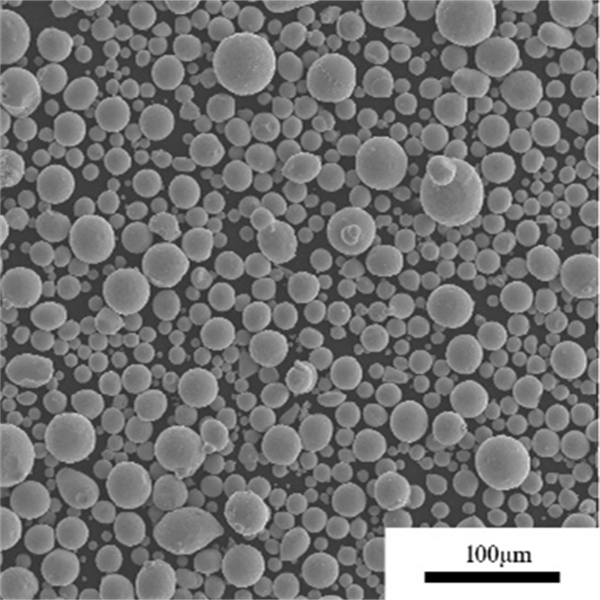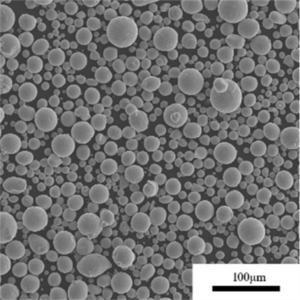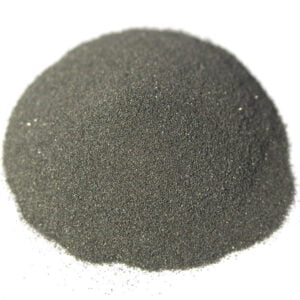316L rostfritt stål Pulver
316L rostfritt stålpulver (ss316L) 316L är en rostfri stålkvalitet, som klassificeras enligt den metallografiska strukturen och tillhör austenitiskt rostfritt stål.
Låg MOQ
Tillhandahålla låg minsta orderkvantitet för att möta olika behov.
OEM & ODM
Tillhandahålla kundanpassade produkter och designtjänster för att tillgodose unika kundbehov.
Tillräckligt lager
Säkerställa snabb orderhantering och tillhandahålla tillförlitlig och effektiv service.
Kundtillfredsställelse
Tillhandahålla högkvalitativa produkter med kundnöjdhet i fokus.
dela denna produkt
Innehållsförteckning
Översikt över 316L rostfritt stålpulver
316L är ett austenitiskt rostfritt stålpulver som ofta används i additiv tillverkning för att producera korrosionsbeständiga delar med goda mekaniska egenskaper och svetsbarhet. Den här artikeln ger en detaljerad guide till 316L-pulver.
Nyckelaspekter som täcks inkluderar sammansättning, egenskaper, AM-processparametrar, applikationer, specifikationer, leverantörer, hantering, inspektionsmetoder, jämförelser med alternativ, för- och nackdelar och vanliga frågor. Tabeller används för att presentera information i ett format som är lätt att referera.
Sammansättning av 316L rostfritt stålpulver
Sammansättningen av 316L rostfritt stålpulver är:
| Element | Vikt % | Syfte |
|---|---|---|
| Järn | Balans | Huvudmatriselement |
| Krom | 16-18 | Korrosionsbeständighet |
| Nickel | 10-14 | Stabilisator av austenit |
| Molybden | 2-3 | Korrosionsbeständighet |
| Mangan | <2 | Desoxidationsmedel |
| Kisel | <1 | Desoxidationsmedel |
| Kol | <0.03 | Undvik karbidutfällning |
Den höga krom- och nickelhalten ger korrosionsbeständighet medan den låga kolhalten minimerar karbidutfällning.
Egenskaper för 316L rostfritt stålpulver
Viktiga egenskaper hos 316L pulver inkluderar:
| Fastighet | Beskrivning |
|---|---|
| Korrosionsbeständighet | Utmärkt motståndskraft mot gropfrätning och spaltkorrosion |
| Styrka | Draghållfasthet upp till 620 MPa |
| Svetsbarhet | Lätt svetsbar och mindre benägen för sensibilisering |
| Tillverkningsbarhet | Formas enkelt till komplexa former |
| Biokompatibilitet | Säker för kontakt med människokroppen |
| Temperaturbeständighet | Tål upp till 900°C i oxiderande miljöer |
Egenskaperna gör 316L lämplig för tuffa, korrosiva miljöer.
AM-processparametrar för 316L pulver
Typiska parametrar för utskrift av 316L-pulver inkluderar:
| Parameter | Typiskt värde | Syfte |
|---|---|---|
| Höjd på lager | 20-100 μm | Balans mellan hastighet och upplösning |
| Laserkraft | 150-350 W | Smältningstillstånd utan förångning |
| Skanningshastighet | 200-1200 mm/s | Densitet kontra bygghastighet |
| Avstånd mellan luckor | 100-200 μm | Mekaniska egenskaper |
| Stöd för | Minimalt träd/galler | Överhäng, invändiga kanaler |
| Varm isostatisk pressning | 1150°C, 100 MPa, 3 timmar | Eliminerar porositet |
Parametrar skräddarsydda för densitet, mikrostruktur, produktionshastighet och efterbearbetningsbehov.
Tillämpningar av 3D-printade 316L-delar
AM 316L komponenter används i:
| Industri | Tillämpningar |
|---|---|
| Flyg- och rymdindustrin | Konstruktionsfästen, paneler, höljen |
| Fordon | Turbinhus, pumphjul, ventiler |
| Kemisk | Pumpar, ventiler, reaktionskärl |
| Olja och gas | Borrhålsverktyg, grenrör, flänsar |
| Biomedicinsk | Dentala, ortopediska implantat, kirurgiska verktyg |
Fördelarna jämfört med bearbetad 316L inkluderar komplexa geometrier, minskat antal delar och accelererad produktutveckling.
Specifikationer för 316L Powder för AM
316L pulver måste uppfylla strikta specifikationer:
| Parameter | Specifikation |
|---|---|
| Partikelstorleksintervall | 15-45 μm typiskt |
| Partikelns form | Sfärisk morfologi |
| Skenbar densitet | > 4 g/cc |
| Tappdensitet | > 6 g/cc |
| Hall flödeshastighet | > 23 sekunder för 50 g |
| Renhet | >99,9% |
| Syrehalt | <1000 ppm |
Anpassade storleksfördelningar och kontrollerad sammansättning tillgängliga.
Leverantörer av 316L rostfritt stålpulver
Ansedda 316L pulverleverantörer inkluderar:
| Leverantör | Plats |
|---|---|
| Sandvik Osprey | STORBRITANNIEN |
| Snickare Tillsats | USA |
| LPW-teknik | STORBRITANNIEN |
| Erasteel | Sverige |
| Kritiska material | USA |
| Praxair | USA |
Priserna varierar från $50/kg till $120/kg baserat på kvalitetsöverväganden och ordervolymer.
Hantering och förvaring av 316L pulver
Som ett reaktivt material är noggrann 316L pulverhantering avgörande:
- Förvara förslutna behållare åtskilt från fukt, syror och antändningskällor
- Använd inert gasstoppning under transport och förvaring
- Jorda utrustningen för att avleda statiska laddningar
- Undvik ansamling av damm genom utsugning och ventilation
- Följ säkerhetsdatabladets försiktighetsåtgärder
Rätt teknik ger optimalt kruttillstånd.
Inspektion och testning av 316L pulver
Metoder för kvalitetstestning inkluderar:
| Metod | Testade parametrar |
|---|---|
| Analys av siktar | Fördelning av partikelstorlek |
| SEM-avbildning | Partikelns morfologi |
| EDX | Kemi och sammansättning |
| XRD | Befintliga faser |
| Pyknometri | Täthet |
| Hall flödeshastighet | Flödbarhet för pulver |
Testning enligt ASTM-standarder verifierar pulverkvalitet och batchkonsistens.
Jämför 316L med alternativa legeringspulver
316L jämförs med andra legeringar som:
| Legering | Motståndskraft mot korrosion | Styrka | Kostnad | Utskriftsmöjlighet |
|---|---|---|---|---|
| 316L | Utmärkt | Medium | Medium | Utmärkt |
| 17-4PH | Bra | Hög | Medium | Bra |
| IN718 | Bra | Mycket hög | Hög | Rättvist |
| CoCr | Rättvist | Medium | Medium | Bra |
Med sina balanserade egenskaper är 316L mycket mångsidig för små till medelstora AM-komponenter som behöver korrosionsbeständighet.
För- och nackdelar med 316L Powder för AM
| Proffs | Nackdelar |
|---|---|
| Utmärkt korrosionsbeständighet och biokompatibilitet | Lägre högtemperaturhållfasthet än legeringar |
| Lätt svetsbar och maskinbearbetningsbar | Känslig för porositet under tryckning |
| Kostnadsfördelar jämfört med exotiska legeringar | Benägen för termisk sprickbildning |
| Kan matcha egenskaper hos smidda material | Krävs efterbearbetning som HIP |
| Utbud av leverantörer tillgängliga | Lägre hårdhet än fällningshärdande legeringar |
316L ger mångsidig prestanda till måttlig kostnad, om än med kontrollerade processkrav.
Vanliga frågor om 316L rostfritt stålpulver
F: Vilket partikelstorleksområde fungerar bäst för utskrift av 316L legering?
S: Ett typiskt intervall är 15-45 mikrometer. Det ger god pulverflödbarhet i kombination med hög upplösning och densitet.
F: Vilka efterbearbetningsmetoder används på 316L AM-delar?
S: Varmisostatisk pressning, värmebehandling, ytbearbetning och elektropolering är vanliga metoder för att uppnå full förtätning och ytfinish.
F: Vilken metall 3D-utskriftsprocess är idealisk för 316L legering?
S: Alla större pulverbäddsfusionsprocesser inklusive selektiv lasersmältning (SLM), direkt metalllasersintring (DMLS) och elektronstrålesmältning (EBM) används regelbundet.
F: Vilka industrier använder additivt tillverkade 316L-komponenter?
S: Flyg-, fordons-, biomedicinsk, marin hårdvara, kemisk bearbetning och olje- och gasindustrin drar nytta av 3D-utskrivna 316L-delar.
F: Kräver 316L stödstrukturer under 3D-utskrift?
S: Ja, stödstrukturer är viktiga på överhäng och överbryggade sektioner för att förhindra deformation och möjliggöra enkel borttagning efter utskrift.
F: Vilka defekter kan uppstå vid utskrift av 316L-pulver?
S: Potentiella defekter är porositet, sprickbildning, förvrängning, brist på smältning och ytjämnhet. De flesta kan förhindras med optimerade parametrar.
F: Vad är den viktigaste skillnaden mellan 316 och 316L legeringar?
S: 316L har lägre kolhalt (0,03% max) vilket förbättrar korrosionsbeständigheten och eliminerar skadlig karbidutfällning under svetsning.
F: Hur är egenskaperna hos tryckt 316L jämfört med smideslegering?
S: Med optimerade parametrar kan AM 316L-komponenter uppnå mekaniska egenskaper i nivå med eller överträffa konventionellt bearbetade smidesmotsvarigheter.
F: Vilken densitet kan förväntas med 3D-utskrivna 316L-delar?
S: Densitet över 99% kan uppnås för 316L med idealiska parametrar skräddarsydda för legeringen, matchande bearbetade materialegenskaper.
F: Vilken finish appliceras vanligtvis på 316L AM-delar?
S: Slipande flödesbearbetning, CNC-bearbetning och elektropolering är vanliga efterbehandlingsprocesser för att ta bort ytråhet och uppnå de erforderliga toleranserna.
Få det senaste priset
Om Met3DP
Produktkategori
HOT SALE
KONTAKTA OSS
Har du några frågor? Skicka oss meddelande nu! Vi kommer att betjäna din begäran med ett helt team efter att ha fått ditt meddelande.

Metallpulver för 3D-printing och additiv tillverkning
FÖRETAG
PRODUKT
cONTACT INFO
- Qingdao City, Shandong, Kina
- [email protected]
- [email protected]
- +86 19116340731













